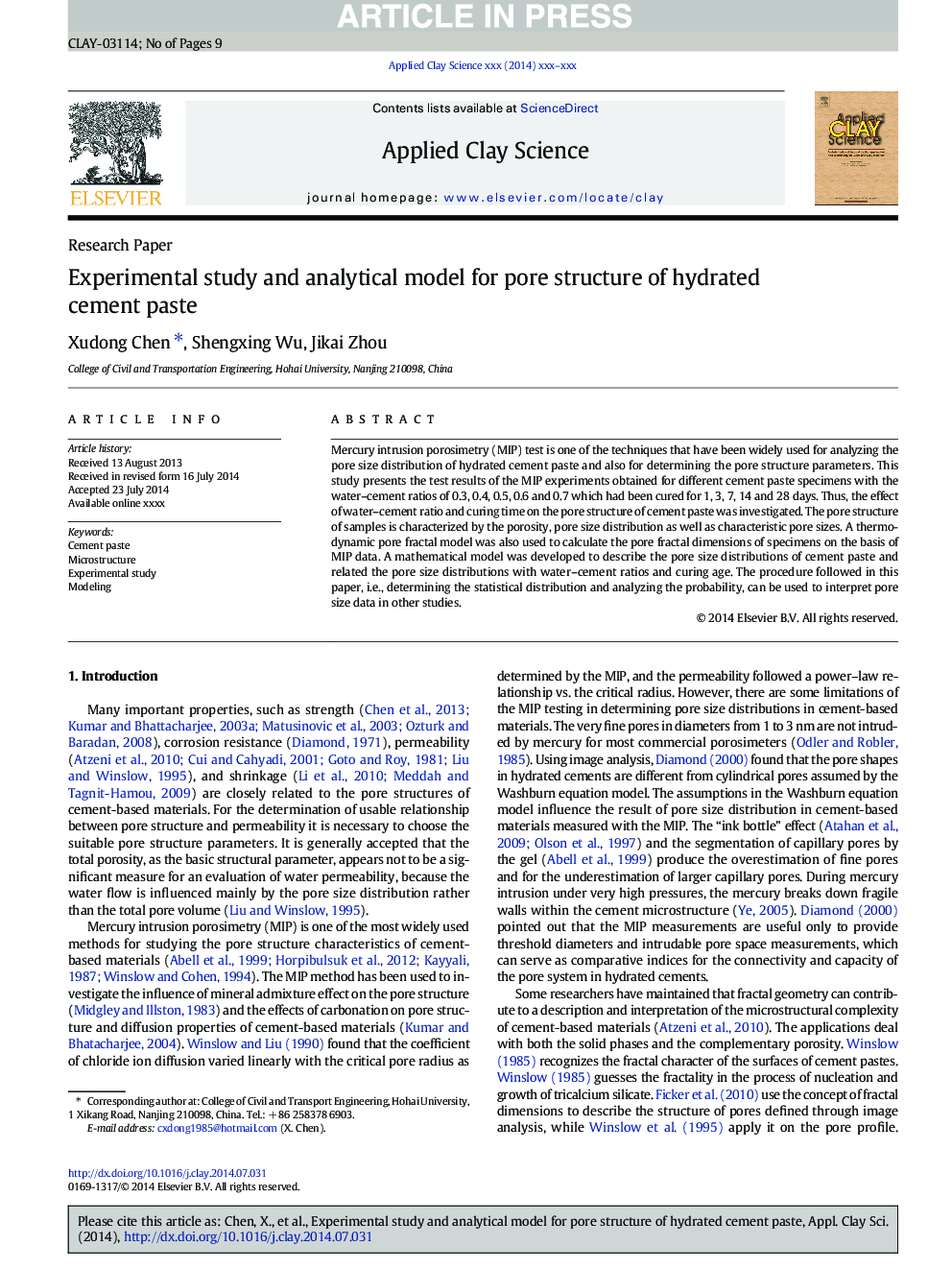| Article ID | Journal | Published Year | Pages | File Type |
|---|---|---|---|---|
| 8046816 | Applied Clay Science | 2014 | 9 Pages |
Abstract
Mercury intrusion porosimetry (MIP) test is one of the techniques that have been widely used for analyzing the pore size distribution of hydrated cement paste and also for determining the pore structure parameters. This study presents the test results of the MIP experiments obtained for different cement paste specimens with the water-cement ratios of 0.3, 0.4, 0.5, 0.6 and 0.7 which had been cured for 1, 3, 7, 14 and 28Â days. Thus, the effect of water-cement ratio and curing time on the pore structure of cement paste was investigated. The pore structure of samples is characterized by the porosity, pore size distribution as well as characteristic pore sizes. A thermodynamic pore fractal model was also used to calculate the pore fractal dimensions of specimens on the basis of MIP data. A mathematical model was developed to describe the pore size distributions of cement paste and related the pore size distributions with water-cement ratios and curing age. The procedure followed in this paper, i.e., determining the statistical distribution and analyzing the probability, can be used to interpret pore size data in other studies.
Related Topics
Physical Sciences and Engineering
Earth and Planetary Sciences
Geochemistry and Petrology
Authors
Xudong Chen, Shengxing Wu, Jikai Zhou,
